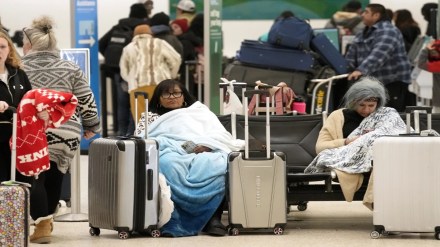Air passengers faced a turbulent year as flight delays soared, leaving them significantly worse off compared to the previous year. Despite an aggressive fleet expansion by airlines to meet burgeoning travel demand, operational inefficiencies marred the flying experience for the majority of the travellers.
Between January-November, one in every three domestic flights (33%) was delayed, according to the Directorate General of Civil Aviation (DGCA). This marks a stark deterioration from 2023, when only 22% of flights by the country’s top six airlines faced delays during the same period.
IndiGo, the country’s largest domestic airline, saw a sharp decline in its on-time performance (OTP), topping the punctuality rankings just once in 2024 compared to six times in 2023. Akasa Air, the country’s youngest airline, seized the top spot six times, with an average OTP of 74%, outpacing IndiGo’s 71%. Vistara, which merged into Air India in November, held the second spot with a 73% OTP.
Meanwhile, Air India and SpiceJet lagged behind, with OTPs of 63% and 50%, respectively. These figures underline the growing challenges airlines face in ensuring punctuality amid rapid fleet and route expansions.
More than 2.39 million passengers were directly affected by delays in the first 11 months of year, a 27% increase compared to the same period in 2023. To compensate, airlines distributed Rs 29.75 crore in facilities to inconvenienced travelers – a steep 41% rise over the previous year. Yet, these measures fell short of easing passenger dissatisfaction.
A host of factors contributed to the spike in delays, with the most common being ‘reactionary delays’. This DGCA-defined category arises when the late arrival of aircraft, crew, passengers, or cargo from a previous flight sets off a cascading effect. Additional causes included nearly 1,000 hoax bomb calls, a Microsoft CrowdStrike outage, mass pilot absenteeism, and adverse weather conditions.
“For delays exceeding two hours, we offer passengers refunds or rebooking options. In cases of flight diversions due to poor weather, we prioritise re-accommodating passengers but often face constraints until conditions improve,” explained a senior airline executive.
Airlines aggressively expanded their fleets to keep up with the surging demand for air travel. IndiGo added an estimated 60-70 aircraft in 2024, while Air India incorporated a new aircraft every six days. Despite this rapid growth, operational systems struggled to adapt, resulting in widespread inefficiencies. Akasa Air, while gaining market share, faced its own challenges, as delays in Boeing’s aircraft deliveries hindered its expansion plans.
Adding to passengers’ woes, the market has become increasingly consolidated, with over 90% of domestic air traffic controlled by just two players: IndiGo and the Air India group. This duopolistic structure has limited travellers’ options and placed greater pressure on the existing infrastructure.
Despite the challenges, domestic demand for air travel continues to soar. Ratings agency Icra projects domestic passenger traffic to rise to 164-170 million in FY25, reflecting a year-on-year growth of 7-10%.
However, unless airlines address their operational inefficiencies, the growing demand could exacerbate delays and further erode passenger satisfaction. While fleet expansion is essential to meet capacity needs, a renewed focus on streamlining operations, improving punctuality, and enhancing customer service will be critical to ensure a smoother journey for the passengers in the coming years.
As 2024 draws to a close, the message is clear: building bigger fleets is not enough. Airlines must prioritise efficiency and reliability to keep pace with the aspirations of growing air-travelling population.
